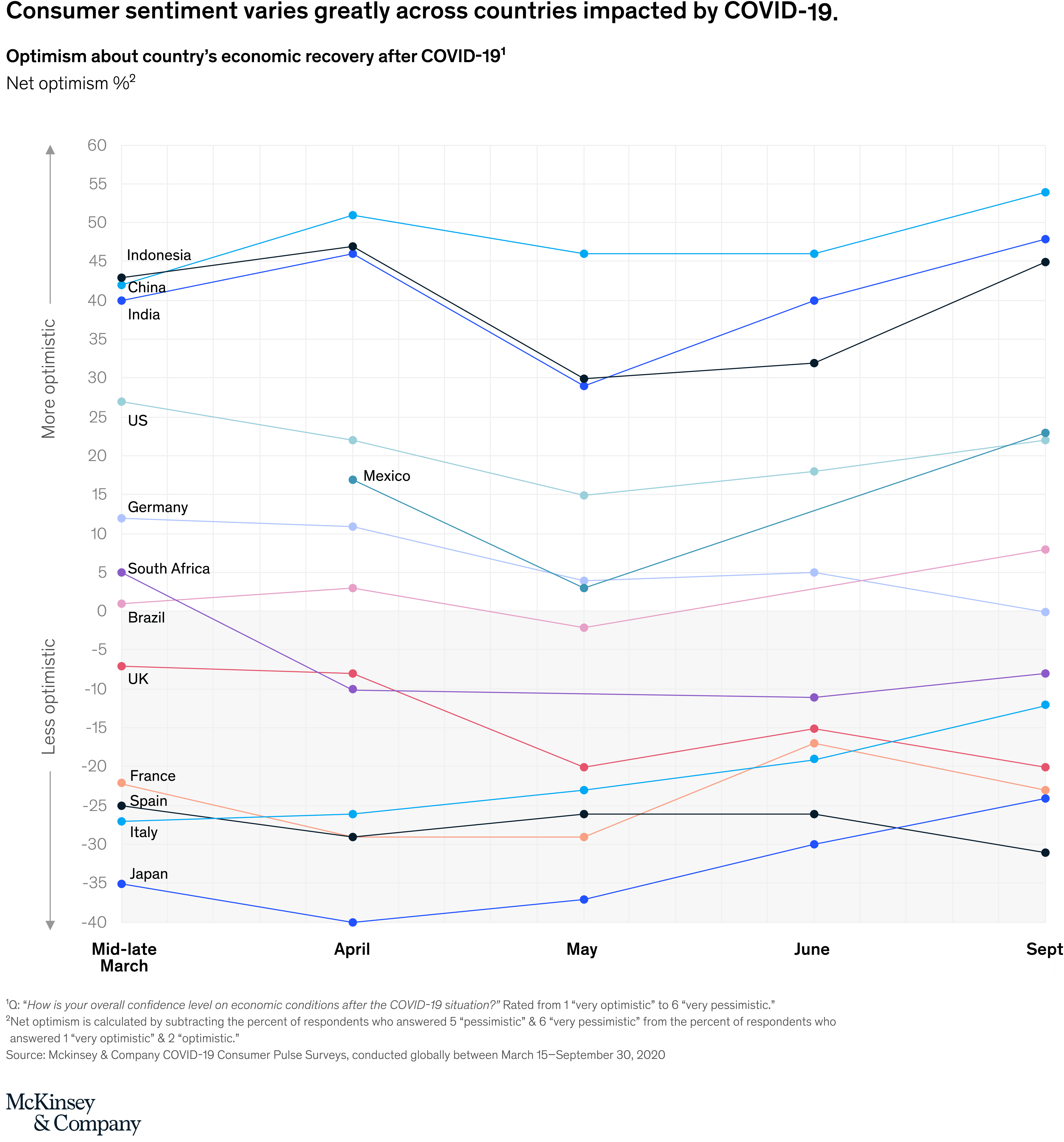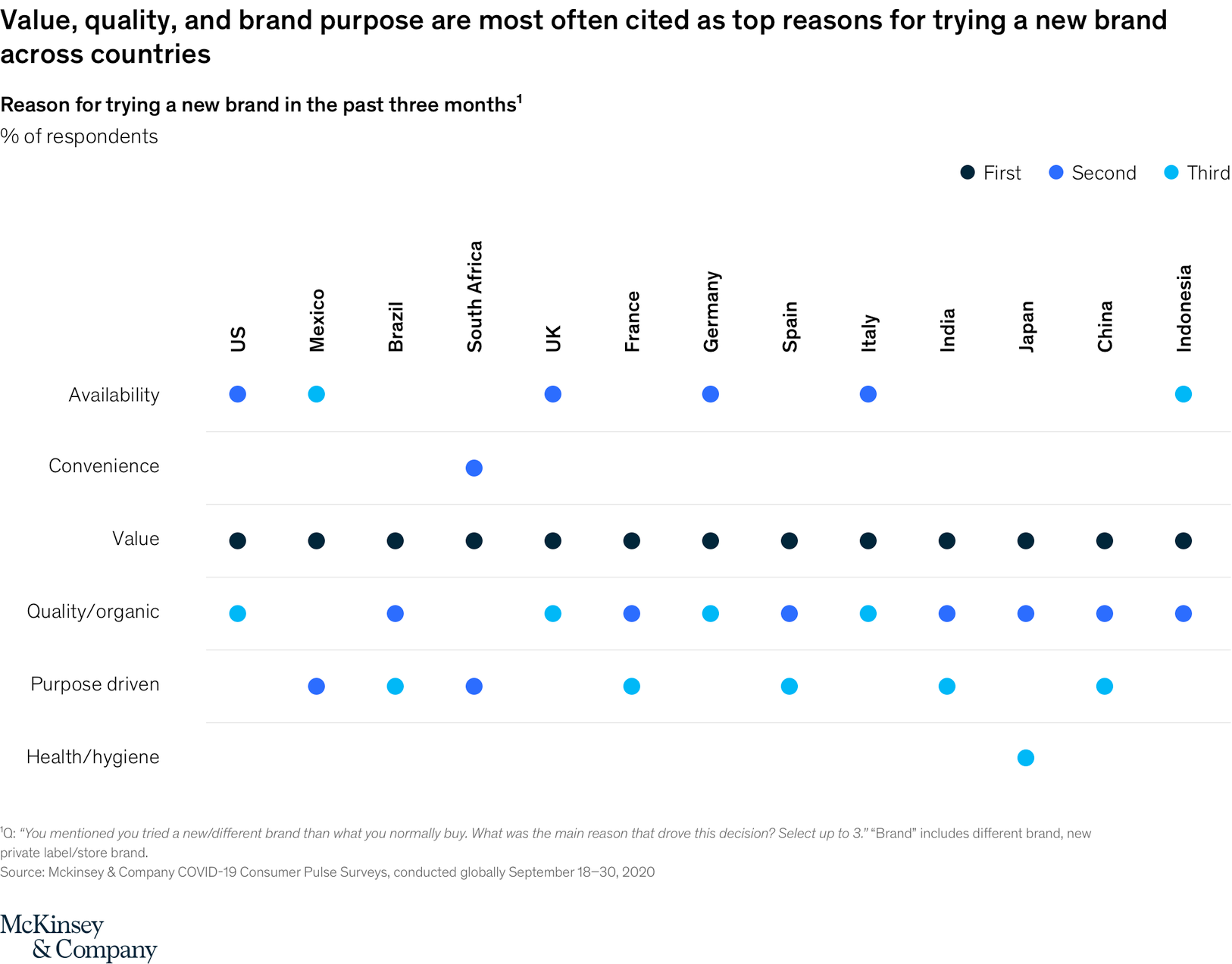
This article was originaly posted at: Eglobalis Blog
We all know that consumer and employee sentiment and loyalty vary across multiple cultures and are impacted by personal situations, country situations, experiences (both CX and EX), and other market aspects. Each can be very different, even beyond interactions and communication channels. This is especially important as we await a COVID-19 vaccine and will continue to be crucial even afterward. Today, I will discuss 6 suggestions that can ensure your operations have a competitive advantage by achieving the right customer sentiment and commitment toward your brand.
People-centric enterprises will certainly have an advantage – not just today, but also down the road – when it comes to the memories they instilled in employees and customers during the COVID-19 pandemic. Companies that did not transform their culture and digital experiences to be more people-centric will probably be stamped with negative memories in our brains.
Those organizations that cared and broadened their engagement with customers will emerge from this crisis stronger. Those that didn’t – by focusing solely on reducing operational costs during the crisis – will probably suffer. People perceive real authentic change and evolution in brands. Human-centered approaches to transformation have become even more important. Companies that don’t care about humans, and don’t develop digital efficacy related to delivery, will stay behind.
Some weeks ago, Forrester predicted that in 2021, the majority of businesses will invest in having a full-fledged digital presence beyond typical IT departments in order to gain additional digital advantages, independent of sector. Many organizations are currently also developing business intelligence and AI departments to improve their understanding of human insights and to leverage AI to enhance performance. I hope some will embrace IoT capabilities to generate great experiences for all of us and that they will properly analyze and explore those technologies to enhance customer and employee experience and sustain growth (the way Siemens, John Deere, and Kaufland are doing, for example).
Even though human sentiments vary from culture to culture, there were shifts in behavior, values, and essentials – both in business and in life – that impacted B2B and B2C organizations equally.
Movement Toward Value, Availability, and Simplicity
As you can see very clearly below in Exhibit 1 (a recent graph from McKinsey & Company), even in a time of disruption for everyone, positive sentiments varied greatly among customers and cultures. The fact that levels of positivity are gaining traction and returning to pre-COVID times shows that hope helps to maintain our power of resilience. At least in some countries.

Loyalty Changes
There will be people, brands, causes – and sometimes sentiments and behaviors – that we are loyal to all our lives. Some loyalties are difficult to change, some become imperative to change, and others are based on necessity. The COVID-19 situation generated a need for all consumers to urgently find solutions – from masks and services to experiences. Many consumers have expressed their intent to incorporate these new habits after the pandemic. As the chart below (Exhibit 2) shows, the overwhelming majority of people (the lowest percentage being 65%) who’ve tried new shopping behaviors intend to continue. In Exhibit 2, you can also see the variance between countries as to how likely their citizens were to adopt new brands and services during the pandemic.

Value, Quality, Purpose, and Convenience
Everyone changes their behaviors. Different cultures have different triggers that drive digital adoption. In Exhibit 3 (below), you can see what triggers global consumers to try new experiences and brands.

One thing is certain: independent of our motives, no matter where we live, we are all in the same boat when it comes to the importance of value.
Digital Adoption vs. Human Needs and Our Loyalty
My work at Eglobalis became digital during the pandemic – from Samsung to Atlas Copco, and now with Software AG – but the challenge to obtain the right data did not become easier. As comfortable as it is for people to work remotely from home, there are tradeoffs. We are dependent on facts, data, and collaboration, and it often takes more time for us to get the data we need. We can still work, but not always as efficiently as we used to. On the other hand, the rise of remote working means we have developed more efficient ways of interacting and collaborating.
During this period, although we are able to perform many tasks digitally, this does not eliminate our need for human contact to solve problems. Even though the option to have products delivered to our doorstep is great, I believe we will all eventually return to some old habits.
On a positive note, companies have added transformation and customer/employee experiences to their priorities and understand that these are crucial for future outcomes. This is good, because many consumers are saying that some of their future purchases will be digital. This is also valid for Europe, which was lagging behind in digital transformation and experiences until COVID-19 appeared. Thus, current investments will be worth it for businesses, as illustrated below:

Advice for the Retention
Advice for the Retention of Customer Loyalty and Sentiment
Some parameters to sustain continued loyalty will depend on how you expended your time during the pandemic. Here are six tips that will help your organization generate growth by acquiring new customers and help you ensure customer loyalty so that you can retain the ones that endured the crisis with you.
Formulate new ideas for better customer insights: Consider creating a department to lead your digital transformation according to data insights. This can be done by your customer insights division or as part of marketing, to confirm that your company understands your customers and their sentiments. For instance, respond to concerns and criticisms by solving their issues. Customers respond extremely well when they feel that your organization is listening and acting.
Employ the right digital or physical solution for your customers: Based on the Forrester prediction, a significant part of the corporate growth after COVID will be in cloud-based solutions. Make sure that cloud solutions are part of your priorities list, if relevant. Also consider utilizing other technologies that will benefit customer outcomes during their interactions.
Simplify your experience design: Design technologies or solutions (or simply acquire third-party solutions) that ensure your customer experience is easy to adopt. Make online sales simple for customers, with only one or two clicks necessary for a purchase. The experiences that count are always simplified, intuitive for the customers, and convenient, as suggested in Convenience Revolution, a book by Shep Hyken.
Cut the unnecessary, and design your experience using only the must-haves: Now, more than ever, employees and customers need fast, efficient, simple solutions. Help them by creating physical and technical solutions that use this principle as the backbone for your experiences. Focus on their protection and on efficiency: enteràget what you needà pay à Simplicity always wins, as mentioned in my past guest post at Jeanne Bliss’s website, titled “The Importance of Simplicity to Customer Experience.” Design to generate adoption, engagement, and a positive memory that ensures your customers return.
Switch to digital operation platforms: A key part of our ability to generate great experiences is undoubtedly our ability to understand our customers and promote our services and products to solve their issues. While ERP systems of the past have been largely inflexible, expensive, and hard to integrate into our dynamic customer needs, I would suggest your organization to look into much more flexible applications – specifically a digital operations platform (DOP), as defined by Forrester – and define a strategy to align internal and external resources in order to achieve a particular business or customer outcome. What I really like about DOP systems is the ability to connect technologies with insights from all departments or divisions, reducing or eliminating the potential for siloed views and preventing supply chain hurdles.
Don’t run away from the facts: Many executives recognize the importance of digitalization and the need to absorb and manage customer insights and sentiment. However, not all organizations will be successful in their current transformations. According to recent BCG research, 75% of top executives recognized the need for a better digital strategy, 80% of organizations say it is a crucial necessity, but only 29% of managers say they think their company is a leader in digital solutions. The research also found that only 30% of organizations are achieving their goals. If you invest millions or even thousands of euros, do it to grow, or don’t do it at all.
Here are the four crucial things you need to consider to be successful in your loyalty and retention approach:
Data and technology: Release your data. Businesses, not IT, should own data. This requires data to be separate from legacy systems. You need a clear, non-siloed vision of yourself. Move fast with customer and data insights.
AI algorithm + humans: Algorithms are evolving quickly. Prepare your organization to act and react with the same or faster speed as the technology evolves; be prepared to embrace it. We need better algorithms before we trust them enough to take humans out of the equation. Moving forward, we can decrease costs as the technologies evolve. Many companies still struggle to understand that AI and humans are a team, and to know when they should switch.
People and processes: The leadership mindset has changed from “managing” to “enabling.” Results and engagement levels are better. But it’s not enough to have a purpose – you have to translate it into actions. Remember: your talent has the same concerns you have as a family person.
Personalize your purpose: Tailor your purpose to the needs of each individual. This will help them to progress and to enjoy working with you or your organization, due to your understanding of their sentiments and concerns.
I hope you enjoyed this article. Stay safe!



